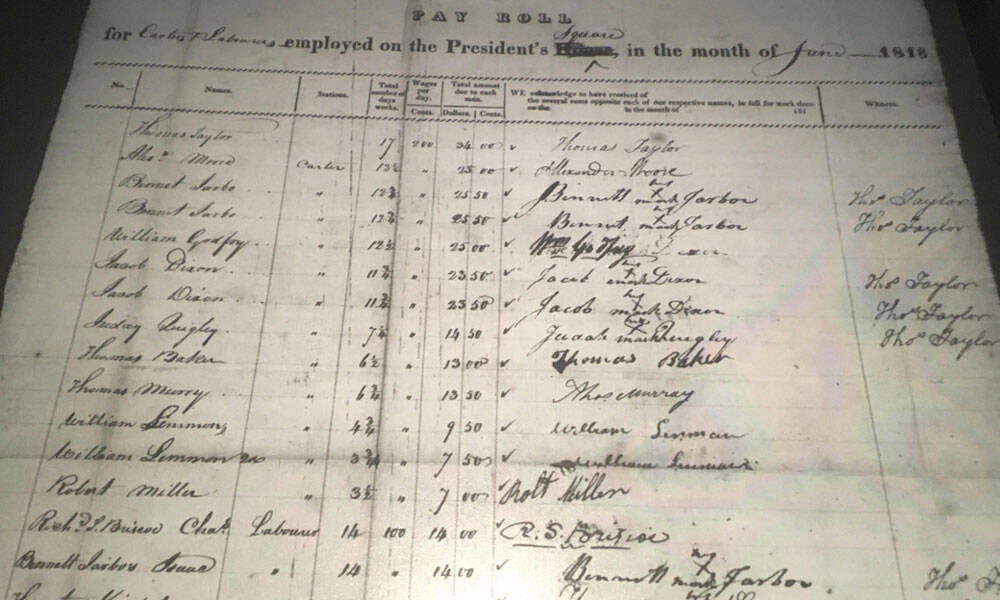
Historical Association Initiative Examines White House Legacy of Slavery
A new White House Historical Association research initiative, unveiled during Black History Month, is setting out to detail the legacy of slavery at and near the presidential residence.
As part of its Black History Month commemoration, the association that tracks and manages the history of the White House is taking a long, hard look at a painful piece of the building’s—and the nation’s—legacy.
The White House Historical Association this week announced a new research initiative titled Slavery in the President’s Neighborhood. Through a detailed timeline and other resources, the project chronicles the stories of enslaved people who built and worked at the executive mansion and nearby properties during the 18th and 19th centuries.
“By connecting these details from diverse sources, the White House Historical Association seeks to return these individuals to the historical forefront,” WHHA says.
The initiative includes an index of all known enslaved people associated with the White House, whether building it or working in the presidential household or on the White House grounds. They worked in a variety of roles, including as chefs, gardeners, butlers, and valets. Presidents as late as Zachary Taylor, who served briefly from 1849 to 1850, used enslaved labor at the White House. At least a dozen presidents owned enslaved people at some point their lives, eight while in the White House, WHHA notes.
Additionally, the guide offers a virtual tour of the slave quarters at Decatur House, one of the only such examples still standing near the White House. Enslaved people’s living conditions at the White House often changed based on who was president, WHHA says.
In a news release, WHHA President Stewart McLaurin said the association will continually update the resources as more details surface in the research.
“There are few written accounts of the enslaved and free African Americans who built, lived, and worked at the White House, and with this initiative, we’re focused on identifying those individuals and returning them to the historical forefront by telling their stories,” McLaurin said. “We also wanted to create a space where this information could be continuously compiled and shared with the public to further the understanding of life at the White House during this time period.”
A list of enslaved workers at the White House circa 1818. (White House Historical Association)






Comments